

Imagine construction projects cutting their completion time by half while doubling their safety standards. That's the surprising reality. Robotics on construction sites are transforming the industry faster than anyone anticipated.
In 2025, these robotic innovations are not just a trend but a necessity. Labor shortages and unprecedented demand for new infrastructure make the case for efficiency and safety improvements clear. But what’s driving this seismic shift?
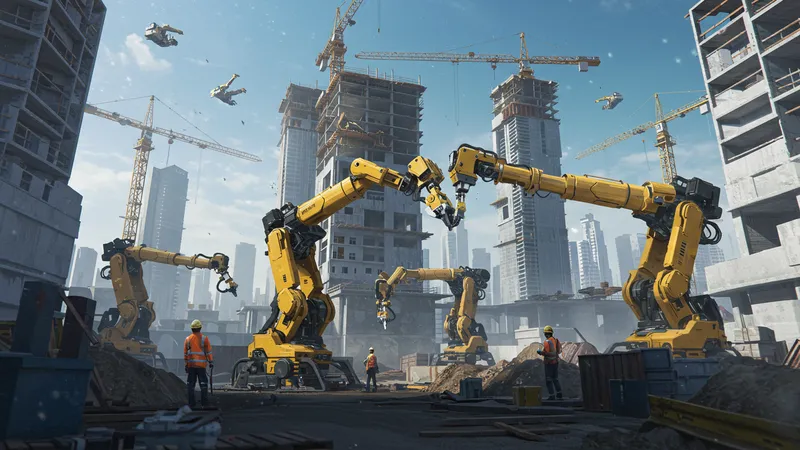
Here’s where it gets intriguing – robots are not just doing more; they're doing it better. Construction tasks that took weeks can now be completed in days with precision that human labor alone could never achieve. With smart sensors and AI, robots can predict potential hazards, effectively reducing human error. But that's not even the wildest part…
Unexpectedly, these innovations are also creating new employment roles. While traditional jobs are evolving, the demand for tech-savvy workers who can operate and maintain these machines is skyrocketing. As workers adapted to this new wave, profit margins soared — construction sites became safer, and creative solutions emerged. Yet, as you might suspect, there’s more complexity under the hood. What happens next shocked even the experts…
The introduction of robots is rewriting the labor rulebook. Automated machines are now capable of complex tasks such as bricklaying, rebar tying, and even intricate painting. By taking over these demanding jobs, they significantly reduce onsite injuries. But there’s more: these machines don’t tire or become less efficient, unlike human workers engaged in repetitive tasks.
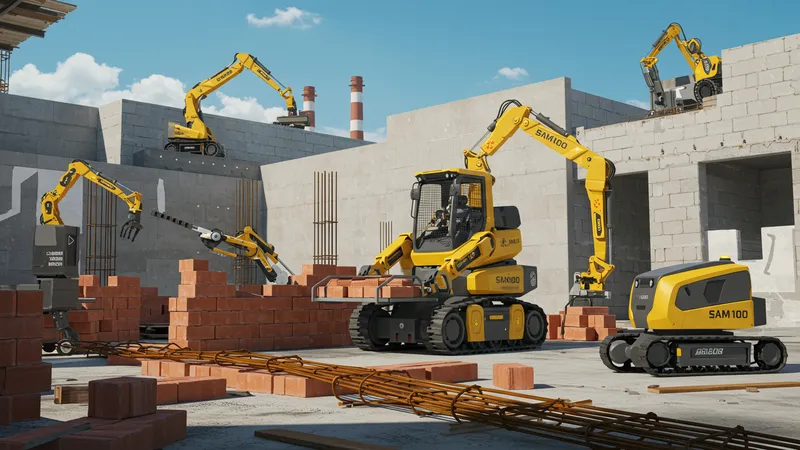
This development is a game-changer, given the labor shortages plaguing the construction industry. Companies are finding that investing in robotic systems like SAM100, with its ability to lay about 3,000 bricks per day—a feat no human can match consistently—offers unprecedented efficiency. Yet, there is still a notable twist regarding workplace dynamics and workforce integration.
In many cases, construction firms are seeing a return on investment within a year due to the reduced need for manual labor and minimized downtime. This creates a shift in labor costs, reallocating budgets from labor wages to technology investment. Led by innovation, the job market is seeing a rise in roles that focus on monitoring and maintaining these robots.
While some fear job displacement, industry experts argue that it brings numerous benefits, including enhanced training opportunities. As the industry adapts, so must educational programs, preparing the next generation of workers for a world where technology and tradition coexist. But there’s one more twist that might catch you off guard…
One of the standout features of robotic involvement on construction sites is the advanced safety it brings. Equipped with AI, these machines can identify potential hazards in real-time and alert human workers, preventing accidents before they occur. Some systems can even intervene directly to correct a dangerous situation, showcasing a nearly futuristic level of preventative safety measures.
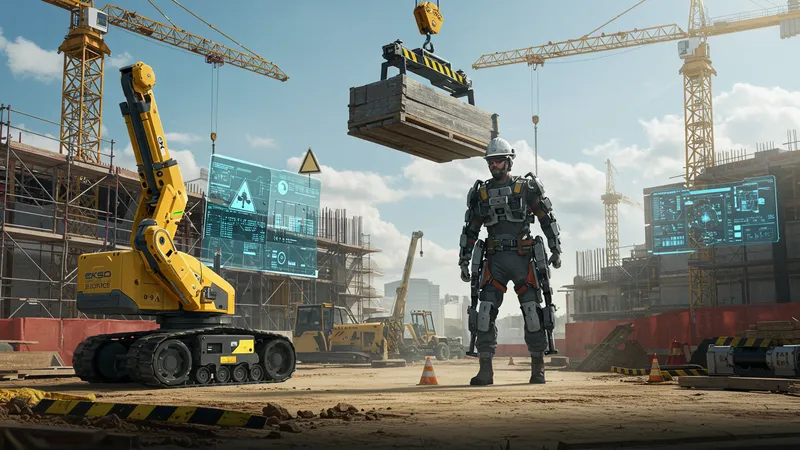
This proactive stance on safety doesn’t just keep workers out of harm's way; it also drastically cuts down on costs associated with workplace accidents. Companies like Ekso Bionics offer exoskeleton technology that assists workers in lifting heavy objects safely, reducing strain and preventing injuries. Their product, for instance, is priced starting at $5,000, a worthwhile investment for long-term safety and financial returns.
Furthermore, AI-driven systems can deeply analyze site layouts to optimize machinery placement and motion paths, reducing the likelihood of machine errors. These technologies are reshaping what it means to maintain a safe construction environment. But it’s not just about avoiding danger; it opens new doors to operational transparency. There’s more to this AI innovation than meets the eye.
Interestingly, this advancement leads to a secondary revolution in data usage within construction projects. Data collected from robotic activity is now instrumental in formulating strategies for future project planning and safety protocols, paving the way for a smarter approach to construction management. And what you read next might change how you see this forever.
With the integration of robotics on construction sites, the financial landscape is being reshaped. Although initial investment costs may seem daunting, the long-term savings tell a different story. Companies report significant reductions in labor costs and wasted materials, thanks to the precision and efficiency brought by robotics.
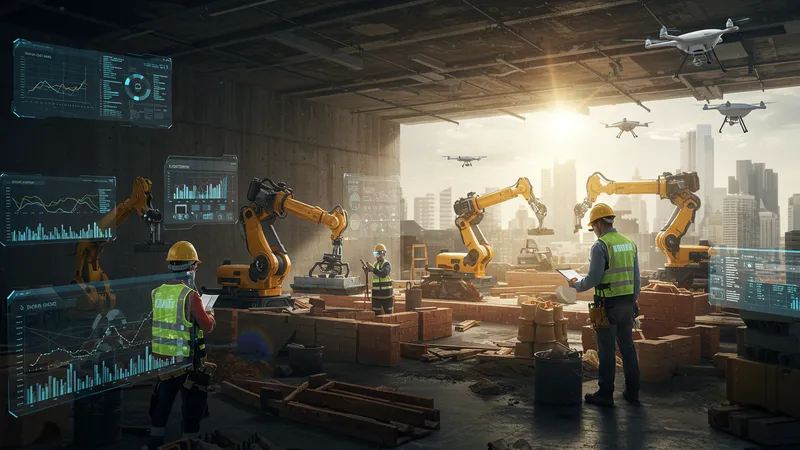
Construction firms that have adopted robotics frequently tout a notable return on investment through enhanced productivity and reduced overheads. For instance, budget allocations previously designed for labor can be refocused on innovation and expansion efforts, leading to company-wide growth. The financial implications are profound yet manageable, considering tech adoption's broad spectrum.
In addition to cost savings, these robotic systems offer enhanced value propositions. Projects no longer face unanticipated delays caused by human error or mismanagement, translating into a more predictable budgetary outlook. The industry is learning to appreciate that technology doesn’t replace expertise; it enhances and extends it.
However, navigating the transition towards a robotics-centric construction site involves financial strategy, keen insight, and readiness to adapt. As companies invest in these technologies, they are not just investing in machinery but in an evolved future. And what’s just around the corner might surprise even the most seasoned professionals.
Besides amplifying efficiency and safety, the integration of robotics is significantly decreasing the environmental footprint of construction projects. By maximizing resource usage and optimizing energy consumption, these technological advances are steering the industry towards sustainable practices like never before. Robots conduct tasks with minimal waste, aligning perfectly with the growing need for eco-friendly solutions.
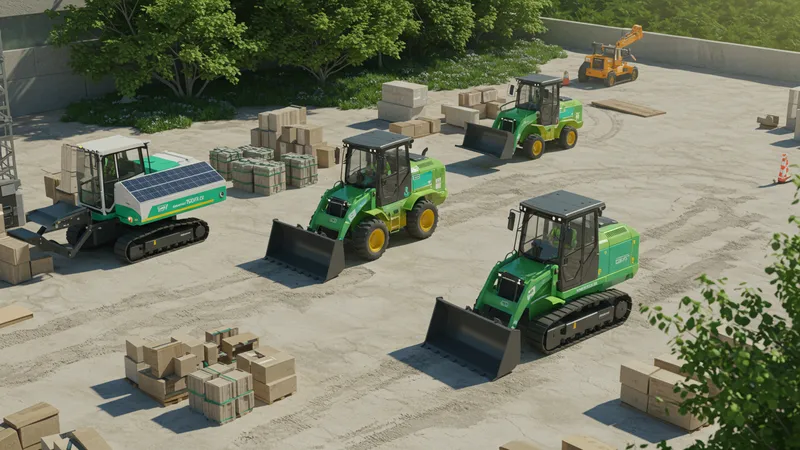
Autonomous machinery, such as electric bulldozers and solar-powered site equipment, shows how technology aligns with environmental goals. Innovations are even leading to the use of sustainably sourced materials, cutting down on emissions associated with traditional construction practices. In fact, robotics play a key role in achieving sustainability targets that seemed unattainable just a few years ago.
More interestingly, firms adopting these technologies find themselves often closer to regulatory compliance, as many governments push for greener business operations. This paves the way for smoother project approvals and government incentives, fostering an improved ecological ethos within the industry.
As companies embrace this green revolution, it becomes evident that the construction industry's future is not only high-tech but also environmentally responsible. Yet, understanding the environmental implications of robotics adoption goes beyond immediate changes. Stay tuned, as the environmental narrative only deepens from here...
The arrival of robotics on construction sites has necessitated a paradigm shift in the skills expected from the modern construction workforce. Training programs are being rethought to accommodate a new type of labor force—one that blends traditional construction skills with technology-driven competencies.

Training centers are beginning to incorporate virtual reality and augmented reality in their programs to better prepare workers for the future workspace. Not only do these technologies simulate real-world scenarios for hands-on learning, but they also increase engagement and retention, making learning more effective.
Workers now need to be adept not only in construction practices but also in operating advanced machinery and software management. This transformation creates a pivotal opportunity for existing workers to upskill and for new entrants to the workforce to start on a cutting-edge career trajectory.
Construction firms see the potential benefits of a dual-skilled workforce, which is quickly becoming the industry standard. As training evolves, so does the potential for technological integration firmly rooted in the backbone of industry expertise. But how deep does this transformation run? The revelations could redefine career paths…
The diversity of applications in the robotics sphere is staggering. Beyond heavy lifting and laborious tasks, robots have found their place in surveying and quality assurance on construction sites. Drones equipped with advanced sensors now map out sites more accurately and quickly than manual efforts ever could.
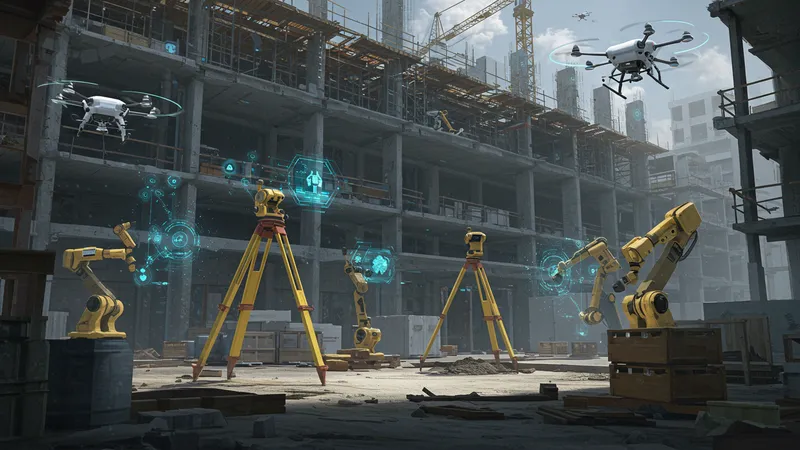
These drones can capture comprehensive data about potential building issues before they escalate, providing insights into structural integrity that weren’t possible in the past. As these technologies continue to develop, their application grows, potentially reshaping the very structure of construction planning and execution.
Furthermore, robotic systems specialize in precision tasks such as interior finishing, which involves intensive detailing difficult for human workers. By achieving this with machine-like precision, the work is both faster and more consistent, raising architectural standards to new heights.
This wave of innovation shows no signs of receding, driving an endless array of possibilities. So, what more can robots do in this space? Their potential applications seem limitless, pushing the envelope of what's possible on modern construction sites. And as these tools continue to evolve, the industry’s landscape shifts yet again.
While robots are the brawn on the construction sites, artificial intelligence provides the brains. AI-driven machines are learning entities, adapting to each project’s unique circumstances. The magic of AI is its ability to process massive amounts of data in real-time, offering insights that make every part of a construction project smarter and more efficient.
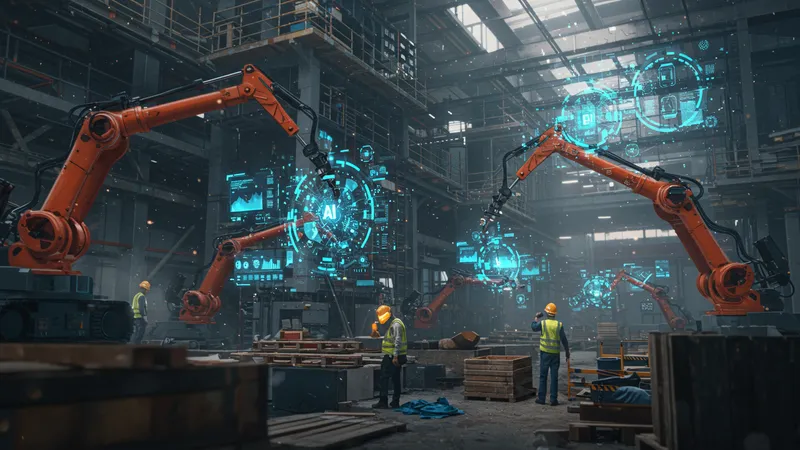
Imagine robotic arms that refine their precision work with each task or automated systems that intelligently adjust their operations to the environment around them. This adaptability opens up unforeseen opportunities to overcome project-specific challenges, nurturing a new breed of innovation.
As AI learns and improves, its role expands, covering project management tasks, predicting maintenance needs, and even estimating costs with greater accuracy. This vastly improves over the traditional reactive model of addressing construction site issues after they arise.
The power of AI elevates projects beyond being routine endeavors, transforming them into well-oiled machines of progress. And yet, as AI climbs new heights, the capabilities and possibilities it brings to the table are nothing short of fascinating. await what comes next—what are the limits of such advanced technology?
One of the most compelling aspects of robotics on construction sites is their adaptability to various tasks and environments. Modern robots come with modular designs, making them highly customizable according to project requirements. From different types of terrain to unique task sequences, these machines can be tailored to meet specific needs.

This adaptability is particularly useful in tackling unique challenges that each project presents. Whether it’s working in extreme weather conditions or on challenging landscapes, the ability to modify robots ensures work continues seamlessly without significant delays.
Moreover, these customized robots enable more efficient project planning and resource allocation. Planners can select and prepare specific modules necessary for each stage of the project, thereby optimizing both time and cost. This enhances the overall project workflow, creating a cascade of efficiency across various operations.
Businesses that embrace such flexibility find themselves better equipped to handle variations in project demands. As robotics continue to evolve, their ability to offer even more tailored solutions suggests promising trajectories in the utility of construction technology. And soon, these adaptive capabilities might just redefine how projects are conceptualized and executed.
One of the biggest surprises in the robotics revolution in construction is that these machines aren’t replacing humans as once feared. Instead, they’re working alongside them, enhancing human capabilities. This collaboration leads to a harmonious balance where humans and robots complement each other's strengths to achieve more than they could alone.
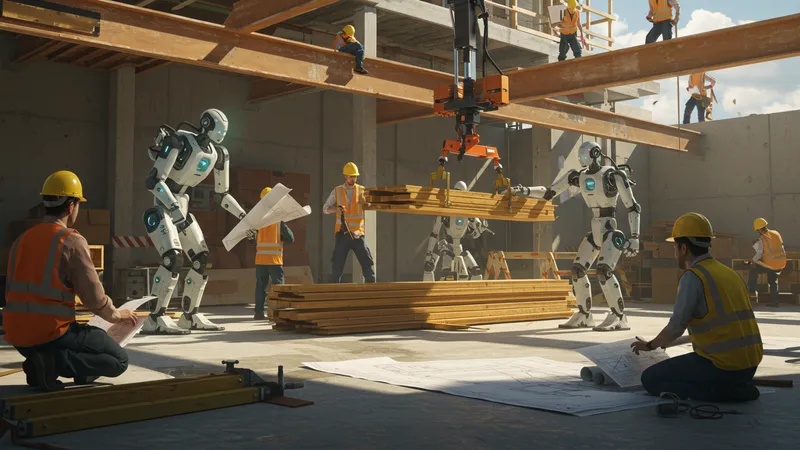
Robots handle repetitive and dangerous tasks, freeing up human workers to focus on more intricate and decision-based tasks that require human judgment. This collaboration boosts productivity and allows workers to learn new skills, enhancing their roles rather than diminishing them.
Additionally, the collaboration encourages workers to innovate alongside technology, leading to more effective problem-solving strategies. The synergy between man and machine is indeed the frontier of modern architecture and construction, bringing to life projects that were once simply not feasible.
This human-robot partnership is not only advancing the industry but also revolutionizing the way we perceive teamwork on construction sites. Productivity soars, safety improves, and workers gain renewed pride in their roles. So, what does this mean for the future, and what could be next for this evolving synergy?
Even in a world embracing technology, the adoption of robotics in construction still faces societal hurdles. Public perception is often tinged with skepticism, rooted in fears of job displacement and safety concerns. However, these perceptions are undergoing a shift as the benefits of robotic technology in construction become more apparent.
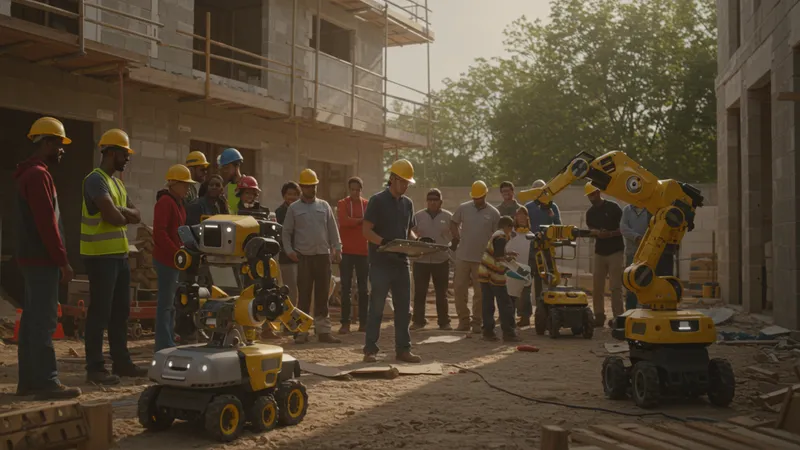
Industries are actively engaging with communities to showcase the value that comes with integrating robotics. Through workshops, demonstrations, and open-site days, the public is learning how these innovations do more than replace—they enhance, support, and expand opportunities for both businesses and workers.
Efforts to educate the public about the role and impact of robotics are gradually overcoming misconceptions. As transparency grows, so does public confidence in this technological transition, convincing more people that robotics are the key to safer, smarter, and more efficient construction practices.
The evolution of public perception is pivotal for the industry’s future, and as acceptance grows, so does the potential for implementing even more advanced technologies. The journey of changing perceptions continues, but there's a hint of what's on the horizon that could completely change the game…
Another lesser-discussed benefit of construction robotics is their contribution to project longevity. With technology ensuring higher precision and consistency, the resulting structures tend to have a much longer lifespan. This longevity comes without the typical wear and tear that compromises structural integrity over time.
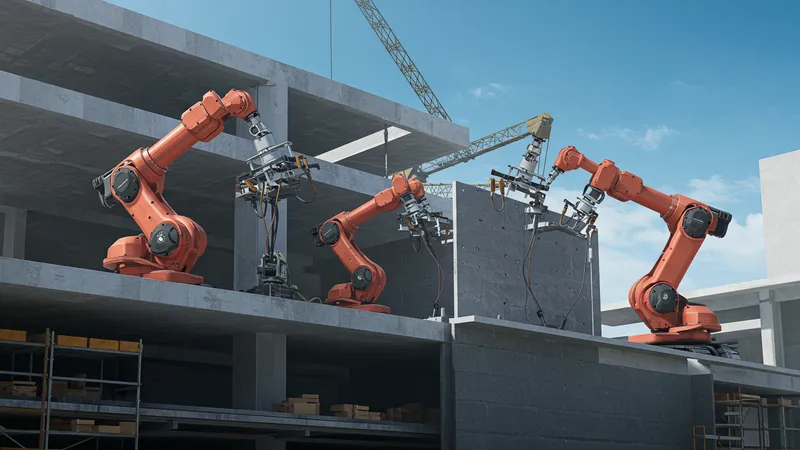
Precision-driven construction means buildings withstand environmental stresses more effectively, reducing maintenance costs and extending service life. These outcomes are financially rewarding and beneficial to community resilience, offering structures that perform reliably over decades.
Furthermore, integrating robotics in the planning stages allows for better forecast modeling of a building’s longevity, informing maintenance schedules and future-proofing urban infrastructure. This knowledge helps smooth out bumps in urban planning and ensures that buildings can adapt to future needs.
As we push the boundaries of what technology can achieve, the promise of enduring infrastructure grows ever closer. But how far can robotics take us towards truly sustainable, enduring construction? The full potential might still be just around the corner, ripe for discovery…
While robotics are already reshaping construction, the horizon holds even more disruptive potential with technologies waiting to step into the spotlight. Quantum computing, for instance, could take construction planning to an unimaginable sync between demand and delivery, eradicating inefficiencies.
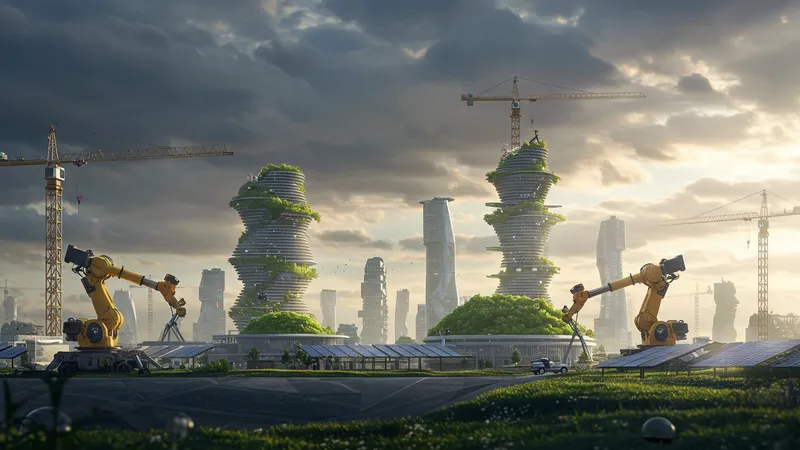
Another promising advancement is the rise of bioengineering materials that, when coupled with robotics, result in buildings constructed sustainably and cost-effectively. Solar-synthesis may soon offer self-constructing buildings, revolutionizing the concept of mobility within urban spaces.
The integration of the Internet of Things (IoT) with robotics on construction sites also presents the possibility of entirely autonomous project sites, operating round the clock with minuscule human intervention. This autonomy could be the golden ticket to consistent quality and unprecedented efficiency.
As these technologies mature, their impact on construction could be not just evolution, but outright revolution. The stages are set for reimagining how we build our world, urging curiosity and anticipation for the coming developments. But how will these shifts fundamentally impact construction, let alone, the world at large?
The landscape of construction is undeniably shifting under our feet, with robotics at the helm of this transformation. As we’ve journeyed through the profound shifts taking place, one truth becomes clear: embracing this technological evolution is no longer optional—it's essential. It promises structures that are safer, projects that are more efficient, and environments that are more sustainable.
As we stand at the brink of this technological era, it's crucial to stay informed, involved, and adaptable. Share this article, bookmark it—be part of the conversation that shapes a safer, smarter future for all. For in these narratives of innovation and change, we are writing the blueprint of tomorrow’s world. What happens next is ours to create.